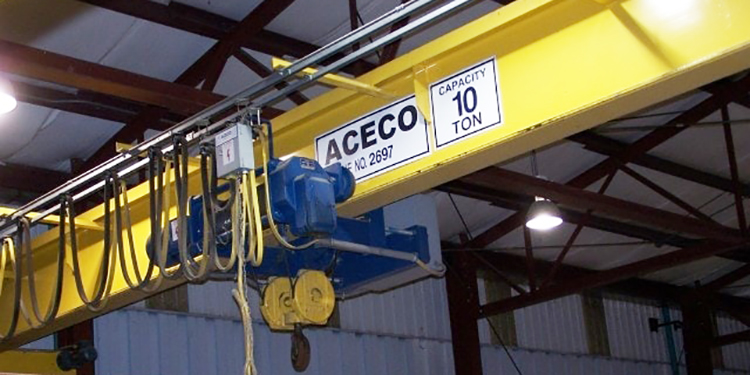Why Capacity Markings Are Crucial To Overhead Handling Safety

All components of an overhead handling system — including cranes, hoists, and monorails — are designed and constructed by their original equipment manufacturer (OEM) to support a maximum rated load. Typically measured in tons, the load capacity of each specific piece of equipment should never be exceeded. Their load capacities are also a key factor in determining the duty cycle of a given overhead handling component.
As a safety measure, it is important to ensure that each component is labeled with signage, known as capacity markings, that notifies the operator of the maximum load for which the equipment is designed and built by the manufacturer. By providing a visible reminder of the maximum capacity of a piece of overhead lifting equipment, the likelihood of an operator attempting to lift something heavier is reduced. This enhances both the safety of the operation and of the personnel working in proximity to the crane, hoist, or monorail system.
There are a number of requirements surrounding the proper use and application of capacity markings:
- The Occupational Health and Safety Administration standard number OSHA 1910.179(b)(5) refers to capacity markings as “rated load markings” and states: “The rated load of the crane shall be plainly marked on each side of the crane, and if the crane has more than one hoisting unit, each hoist shall have its rated load marked on it or its load block and this marking shall be clearly legible from the ground or floor.”
- The American Society of Mechanical Engineers’ standard ASME B30.17-1.1.1 Cranes states: “The rated load shall be marked on each side of the crane, and if the crane has more than one hoisting unit, each hoist shall have its rated load marked on the hoist and its load block so that the rated load marking shall be legible from the ground or floor.”
- The ASME B30.17-1.1.2 Monorails standard states: “The rated load of the monorail should be marked on the monorail and, if marked shall be legible from the ground or floor.”
- The ASME B30.16-1.1.1 Hoists standard states: “The rated load of a hoist shall be marked on the hoist or its load block and shall be legible from the ground or floor.”
Best practices for the application of capacity markings include using simple, clear language with bold lettering large enough to be visible from a distance. On hoists specifically, placement of rated load capacity markings on both the hoist and its load block (although if only one of the two is labeled, it should be the load block). Large, highly visible markings are particularly important for overhead cranes, which should be labeled on both sides to ensure they can be seen from both directions. Likewise, monorails should have their rated load plainly marked on each side of the system.
Prior to using a crane, hoist, or monorail system, the operator should inspect and verify the presence and legibility of capacity markings on each component as one of several pre-operational checklist items. If an issue is noted, the unit (or units) should be promptly removed from service.
Want to learn more about overhead lifting safety? The three members of the Overhead Alliance — the Crane Manufacturers Association of America (CMAA), Hoist Manufacturers Institute (HMI) and the Monorail Manufacturers Association (MMA) — each offer in-depth resources, standards, specifications, and safety checklists specific to that type of equipment. Additionally, the three recently gained ambassador status with OSHA’s Crane, Hoist and Monorail Alliance (CHM), and will promote cooperative programs with the federal agency, raising awareness of OSHA’s initiatives, outreach, communication, training and education, and also providing information, guidance and access to training resources that help protect the health and safety of workers using hoists, cranes and monorails.



